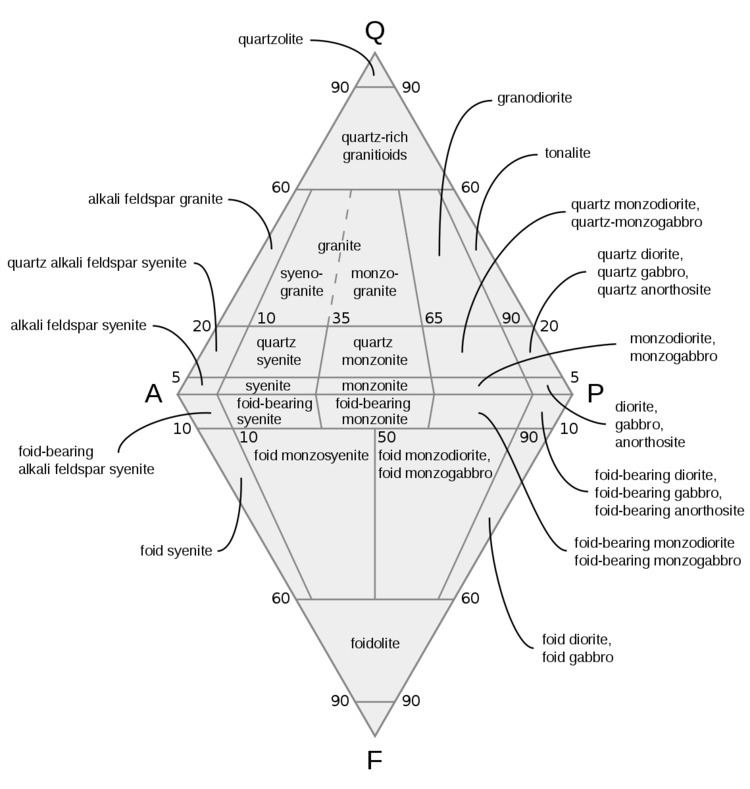 | ||
A QAPF diagram is a double ternary diagram which is used to classify igneous rocks based on mineralogic composition. The acronym, QAPF, stands for "Quartz, Alkali feldspar, Plagioclase, Feldspathoid (Foid)". These are the mineral groups used for classification in QAPF diagram. Q, A, P and F percentages are normalized (recalculated so that their sum is 100%).
Contents
Origin
QAPF diagrams were created by the International Union of Geological Sciences (IUGS): Subcommission on the Systematics of Igneous Rocks fostered by Albert Streckeisen (whence their alternative name: Streckeisen diagrams). Geologists worldwide accept the diagrams as a classification of igneous, especially plutonic rocks.
Usage
QAPF diagrams are mostly used to classify plutonic rocks (phaneritic rocks), but are also used to classify volcanic rocks if modal mineralogical compositions have been determined. QAPF diagrams are not used to classify pyroclastic rocks or volcanic rocks if modal mineralogical composition is not determined, instead the TAS classification (Total-Alkali-Silica) is used. TAS is also used if volcanic rock contains volcanic glass (such as obsidian). QAPF diagrams are also not used if mafic minerals make up more than 90% of the rock composition (for example: peridotites and pyroxenites).
An exact name can be given only if the mineralogical composition is known, which cannot be determined in the field.
Reading QAPF diagram
The QAPF diagram has four minerals or mineral groups chosen as important cornerstones of the classification. These are quartz (Q), Alkali feldspars (A), plagioclase feldspars (P), and feldspathoids (F). F and Q for chemical reasons can not exist together in one plutonic rock. Other minerals may and almost certainly occur in these rocks as well but they have no significance in this classification scheme. So, the whole diagram is actually composed of two ternary plots (QAP and FAP). To use the classification, the concentration (the mode) of these minerals must be known and recalculated to make their sum 100%. For example: a plutonic rock that contains no alkali feldspar and no feldspathoids but contains lots of pyroxenes (neglected in this diagram), plagioclase feldspar and few quartz grains is probably gabbro (located at the right edge of the diagram, near P). This diagram does not determine whether a rock is gabbro, diorite, or anorthosite. There are another criteria used to decide that. Note that this diagram is not used for all plutonic rocks. Ultramafic rocks are the most important plutonic rocks that have separate classification diagrams.
